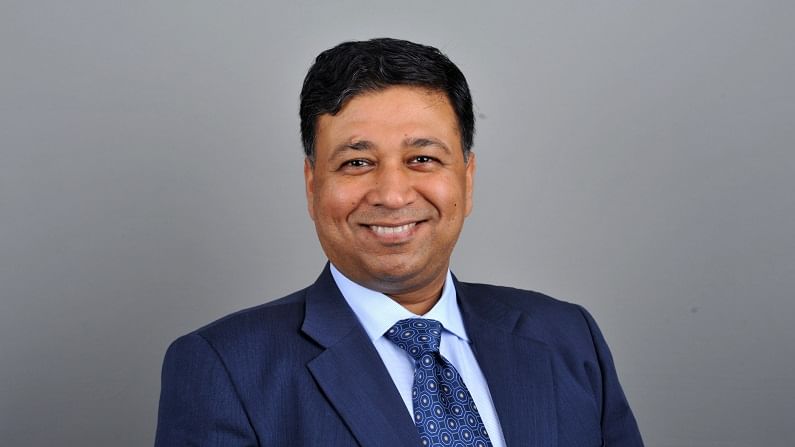Use market corrections to increase equity allocations: Amit Nigam, Invesco Mutual Fund
Investors should moderate their return expectations in the near-term at the back of very strong market performance of the previous 12 months

The economy is set to show improvement in the coming months supported by strong consumption recovery as economic activities resume leading to a healthy investment cycle over the medium term. This outlook offers a good opportunity for equity investors over the next 2-3 years, Amit Nigam, Fund Manager, Invesco Mutual Funds tells Money9.
The stock market is in the midst of a long bull run? What are the key risks investors should be worried about?
The higher number of infections and deaths during the second wave of COVID is a source of uncertainty as higher medical expenses may have eroded the household savings. Further expectations of a possible third wave are still alive. These have the potential to reduce the recovery in real GDP growth. However, there is a rapidly improving vaccination drive and better preparedness of various state governments.
Another source of concern is the spurt in inflation which remains stubborn as that along with slow GDP growth could translate into ‘stagflation’ – a phase which is not rewarding for equity investors.
Our base case hypothesis is that of an improving economic activity in the country, supported by strong consumption recovery in the short term as the economic activities resume and the same leading to a healthy investment cycle over the medium term. This outlook offers a good opportunity for equity investors over the next 2-3 years.
Financials are your biggest bet in multi-cap and ESG schemes. What makes you confident about them?
The previous decade has seen many headwinds for the Indian financial sector as it navigated high NPAs and a declining credit growth. Falling nominal GDP growth had a big role to play in both. Credit growth of 25% YoY during FY08 moderated to 11% YoY in FY19 and further slowed to 5.5% in FY21. Both these headwinds seem to be receding. Nominal GDP growth is expected to pick up in the current year and next. This should support a pick-up in credit growth. Secondly the NPA situation has seen substantial improvement as the banks have provided for most of these and profit recovery in some sectors (like metals) has improved their credit quality.
We believe recovery in the economic activities will see the retail and SME segment regularise their loan repayment schedules.
Additionally, frontline public sector banks and private sector banks have raised capital during the pandemic and today have very strong Tier – 1 capital ratios, which is a comfort factor for investors (as any NPA increases can be provided for).
Finally, valuations of many banks are at a discount to their historical valuations and don’t seem to factor pick up in credit growth and improved balance sheet health. Hence, we are optimistic about financials (prefer banks) from a medium to long term.
Many investors are betting on infrastructure themes citing government focus. Is it really attractive to invest in this theme as we have seen suboptimal performance by the sector and infra companies?
It’s a fair observation that the infrastructure segment has seen sub-optimal performance in the past but when we evaluate the present opportunities that have unfolded we believe that during the next 2 to 3 years infrastructure segment in India has the potential to grow faster than the real GDP growth of the country.
Some of the data points that give us this confidence are as under:
> Planned investment of Rs 111 Lakh crores over FY 2020-25 under the National Infrastructure Pipeline (NIP) – is almost double of Rs 57 lakh crore spent over FY 2013-19.
> Government relaxing its fiscal prudence to reinvigorate growth – FY22 budget targets capex spends increasing to 2.5% of GDP vis-à-vis FY21 budget estimate of 1.8% of GDP.
> Successful roll out of the PLI (production linked incentive) scheme of the government attracting private sector investments.
These investment opportunities are supported by a low interest rate environment and strong liquidity available with banks which will ensure that execution of projects is not constrained. Also, despite the strong 1 year performance, the BSE Infra Index still trades at valuation multiples (on historic basis) which are at almost 50% discount to that of Sensex both on P/E and P/B basis, offering an attractive investment opportunity to investors over the next 2 to 3 years.
What is your advice to the common equity investors at this point?
Based on current assessment, globally oriented businesses, cyclicals and industrials, healthcare and technology will likely dominate most part of 2021, as consumer sentiment repairs itself from the impact of the second wave during this period.
Investors should however moderate their return expectations in the near-term at the back of very strong market performance of the previous 12 months. We suggest investors adopt the mutual fund route for their equity investments to ensure better risk management and performance consistency. Market corrections can be used to increase equity allocations.